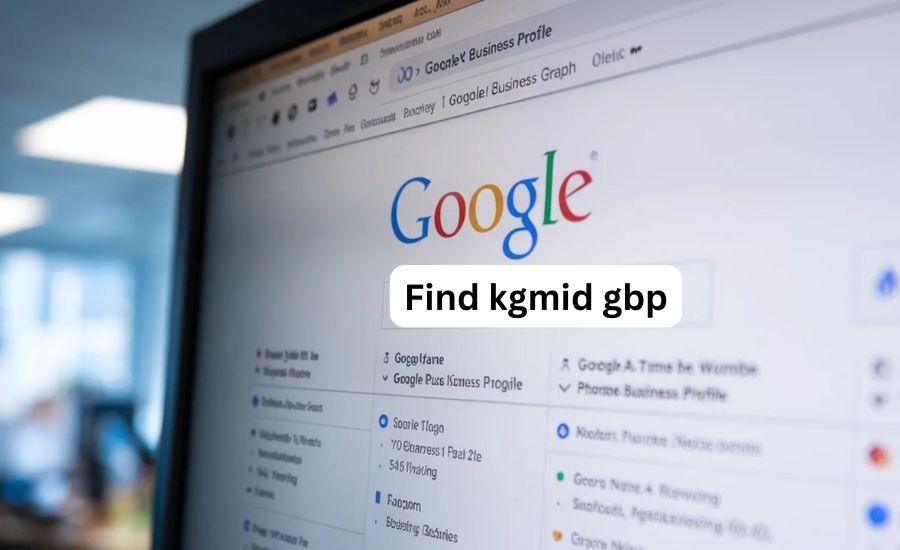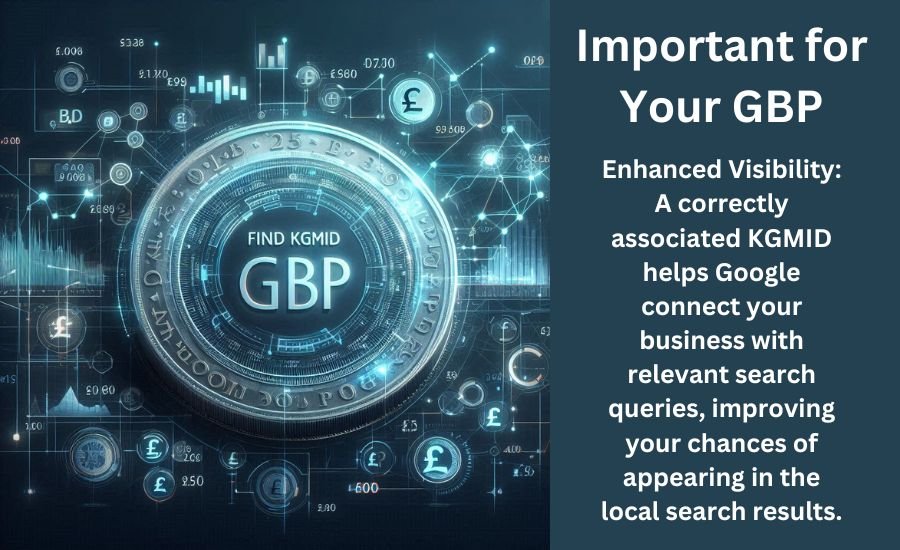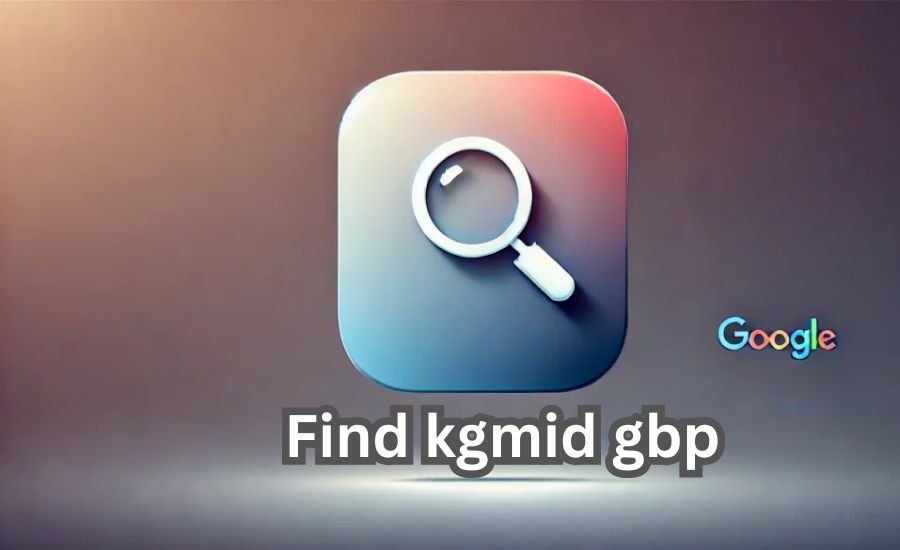In the world of online business, being visible to potential customers is crucial. One key component of this visibility is your Google Business Profile (GBP). Among various technical elements of GBP, the Knowledge Graph Machine ID (KGMID) is essential for managing how your business appears on Google. In this article, we will dive deep into how to find KGMID GBP, what it is, and why it matters for your online presence.
What is KGMID in Google Business Profile?

Before we jump into how to find KGMID GBP, let’s clarify what KGMID is. KGMID stands for Knowledge Graph Machine ID. This is a unique identifier that Google assigns to every entity in its Knowledge Graph. The Knowledge Graph is a powerful system that Google uses to organize and display factual information about various entities, including businesses.
For your business, the KGMID serves as a bridge connecting your GBP to Google’s vast ecosystem. It helps Google accurately display your business information in search results and maps, ensuring that customers find you easily.
Why is KGMID Important for Your GBP?

Knowing how to find KGMID GBP is vital for several reasons:
- Enhanced Visibility: A correctly associated KGMID helps Google connect your business with relevant search queries, improving your chances of appearing in the local search results.
- Accurate Information: With a linked KGMID, all your business details—such as hours of operation, address, and customer reviews—are presented accurately, helping to build trust with potential customers.
- Local SEO Benefits: KGMID plays a crucial role in local search optimization. By linking your KGMID with your GBP, you enhance your local visibility, making it easier for customers to find you.
- Recognition as a Unique Entity: Google increasingly relies on entity-based search to provide users with accurate information. Your KGMID ensures that your business is recognized as a distinct entity in Google’s eyes.
How to Find KGMID GBP: Step-by-Step Guide
Finding your KGMID might seem challenging, but it’s easier than you think. Here are two simple methods to locate it:
Method 1: Using the Google Knowledge Panel
- Search for Your Business: Start by typing your business name into Google’s search bar. If your business has a GBP, you’ll see a Knowledge Panel on the right side of the search results.
Inspect the URL: Once the Knowledge Panel appears, look at the URL in your browser’s address bar. The KGMID is typically embedded in the URL, appearing as a string of letters and numbers after “kgmid=.”
For example, the URL might look like this:
arduino
Copy code
https://www.google.com/search?kgmid=abc123&…
- Extract the KGMID: Copy the KGMID from the URL. This unique identifier links your business to Google’s Knowledge Graph.
Method 2: Using the Google Knowledge Graph API
If you prefer a more automated approach, you can find your KGMID using the Google Knowledge Graph API.
- Access the API: First, set up a Google Cloud account and enable the Knowledge Graph Search API. You’ll need to create API credentials for this.
- Query Your Business: Using a tool like Postman, you can send a request to the API with your business name as the search query.
- Retrieve Your KGMID: The API will return data, including your KGMID, along with other relevant business information.
Bonus Tip: Check Structured Data on Your Website
If your website uses structured data (like schema markup), your KGMID might be embedded in the code. Use tools like Google’s Rich Results Test to check if your KGMID is present in your website’s metadata.
Using KGMID to Optimize Your GBP and Improve SEO
Now that you know how to find KGMID GBP, let’s discuss how you can use it to optimize your Google Business Profile effectively.
1. Consistency is Key
Make sure your KGMID is consistent across all your GBP listings, especially if you have multiple locations. This consistency prevents discrepancies in search results and helps customers find the correct information about your business.
2. Optimize Structured Data
If you haven’t done so already, consider adding your KGMID to the structured data markup on your website. This addition helps Google’s crawlers better understand the relationship between your website and your GBP, further enhancing your local SEO efforts.
3. Monitor Your Search Performance
Utilize tools like Google Analytics and Google Search Console to track the impact of your KGMID on your search performance. By monitoring how well your business ranks in local searches, you can adjust your SEO strategy over time.
Read Must: One-tap-payments
Common Challenges in Finding KGMID GBP
While the process of finding your KGMID is straightforward, you might encounter some challenges:
1. No Knowledge Panel
If your business is new or not well-known, you might not have a Knowledge Panel, making it hard to find your KGMID. To resolve this, focus on optimizing your GBP by providing complete and accurate information. Encourage satisfied customers to leave positive reviews to increase your visibility.
2. Multiple Locations
Businesses with multiple locations may find it challenging to track different KGMIDs. Each location might have its unique KGMID, so it’s essential to maintain an organized list of KGMIDs along with their respective locations.
3. Misidentification
Sometimes, Google may misidentify or merge business profiles, causing inaccuracies. If you notice incorrect information on your GBP, update the Knowledge Graph and provide feedback through Google’s support channels.
Leveraging KGMID for Competitor Analysis
Understanding KGMID isn’t just beneficial for your business; it can also help you analyze your competitors. By finding their KGMID, you can gain insights into their search visibility and strategies.
Analyze Competitor Knowledge Panels
Search for your competitors on Google and check their Knowledge Panels. Extract their KGMIDs and analyze how their businesses are represented in the Knowledge Graph.
Compare Local Rankings
Use tools like Moz Local or BrightLocal to compare how your business ranks against your competitors in local searches. Understanding the differences between KGMIDs can help you refine your SEO strategy and outperform competitors.
Conclusion
Knowing how to find KGMID GBP is essential for businesses looking to improve their online visibility and local SEO efforts. By understanding and leveraging your KGMID, you can ensure that your business is accurately represented in Google’s Knowledge Graph, increasing your chances of appearing in relevant local searches.
From enhancing local SEO rankings to ensuring consistent business information, optimizing your KGMID brings numerous benefits. Make KGMID an integral part of your GBP management strategy, and you’ll be well on your way to achieving greater visibility, better search rankings, and ultimately, more business success.
Next Article: Polmax-llc-net-worth


